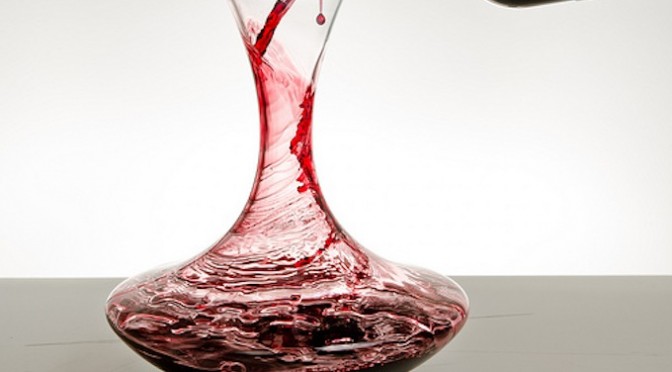Decanting wine is the process of pouring the wine from its original bottle into another container. That could be any carafe, a fancy crystal decanter, or even a mason jar if you’re down-home country. But what is the purpose of this?
Far back in history, decanting wine was a method of pouring only the clear wine out, leaving the naturally-occurring sediment behind in the bottle. This was an issue because wine was sold unfiltered. You might still encounter the occasional unfiltered bottle, for instance in the case of full-body reds that are aged more than ten years, or in vintage ports that have some sediment as a natural side effect.
The second purpose, which remains relevant today, is to let the wine breathe. Now, too much oxygen is bad for wine; there’s a reason so much care is taken with sealing the bottle. But a little air exposure helps to soften and mellow the flavor. This is especially the case with high-tannin wines and heavy wines. Decanting doesn’t do as much for delicate reds like Pinot Noir, or zesty whites like Riesling or Sauvignon Blanc, but it does benefit fuller bodied reds and whites, especially those with oaky tones.
In short, you should consider decanting for: Cabernet Sauvignons, Zinfandels, Barolos, Bordeauxs, Chardonnays, and Shiraz. It serves much the same function as swirling the wine around in a glass does; it opens up the wine and allows it to attain its peak potential taste and nose.

